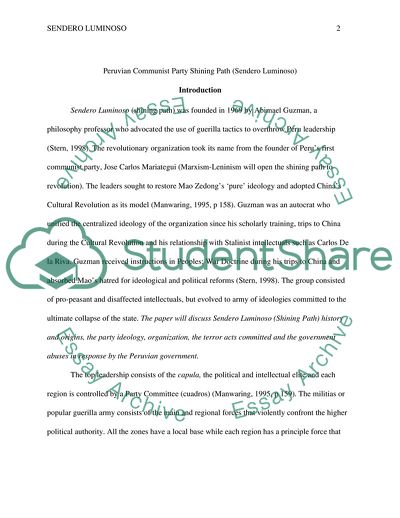Cite this document
(Peruvian Communist Party Shining Path Coursework Example | Topics and Well Written Essays - 2000 words, n.d.)
Peruvian Communist Party Shining Path Coursework Example | Topics and Well Written Essays - 2000 words. https://studentshare.org/politics/1869896-the-communist-party-of-peru-which-is-known-as-shining-path-or-sendero-luminoso
Peruvian Communist Party Shining Path Coursework Example | Topics and Well Written Essays - 2000 words. https://studentshare.org/politics/1869896-the-communist-party-of-peru-which-is-known-as-shining-path-or-sendero-luminoso
(Peruvian Communist Party Shining Path Coursework Example | Topics and Well Written Essays - 2000 Words)
Peruvian Communist Party Shining Path Coursework Example | Topics and Well Written Essays - 2000 Words. https://studentshare.org/politics/1869896-the-communist-party-of-peru-which-is-known-as-shining-path-or-sendero-luminoso.
Peruvian Communist Party Shining Path Coursework Example | Topics and Well Written Essays - 2000 Words. https://studentshare.org/politics/1869896-the-communist-party-of-peru-which-is-known-as-shining-path-or-sendero-luminoso.
“Peruvian Communist Party Shining Path Coursework Example | Topics and Well Written Essays - 2000 Words”. https://studentshare.org/politics/1869896-the-communist-party-of-peru-which-is-known-as-shining-path-or-sendero-luminoso.


